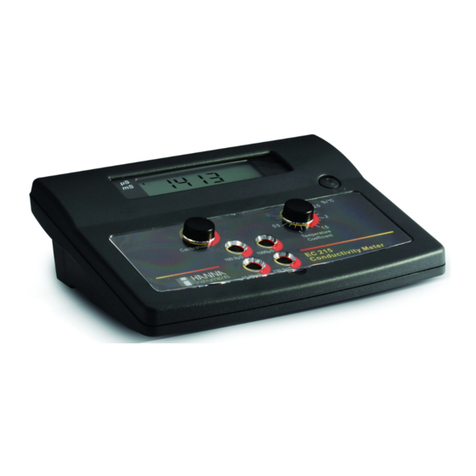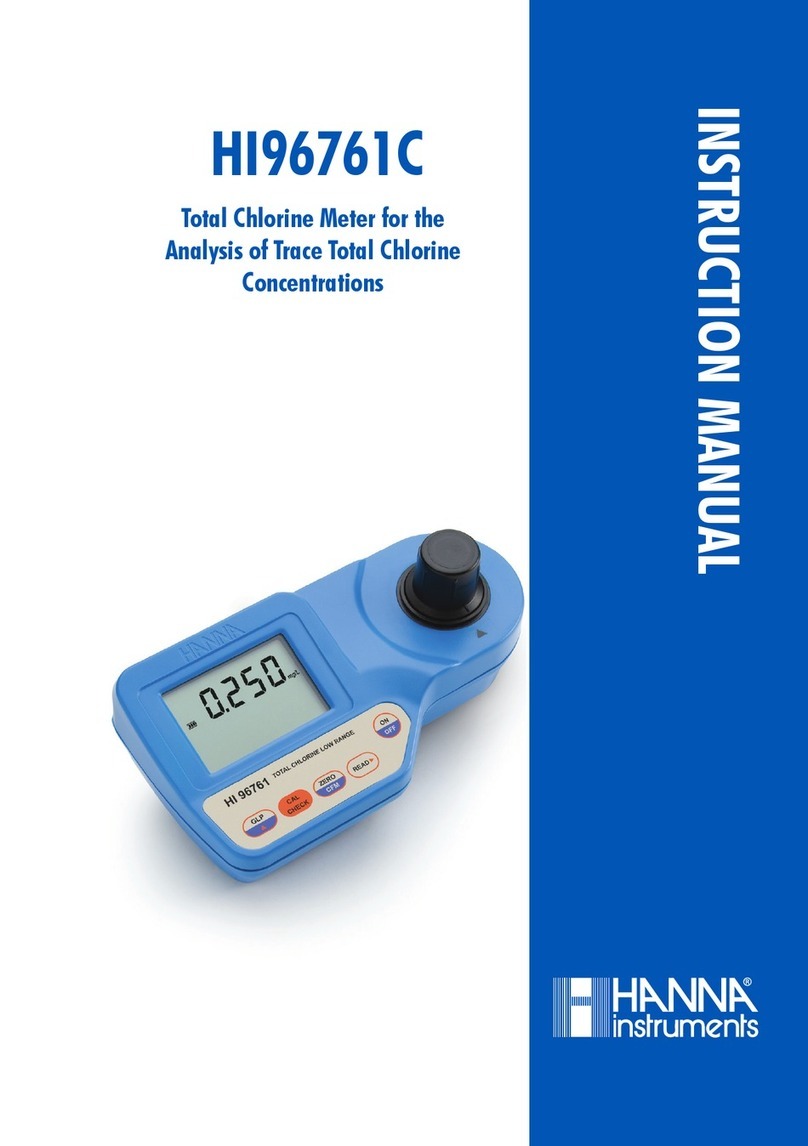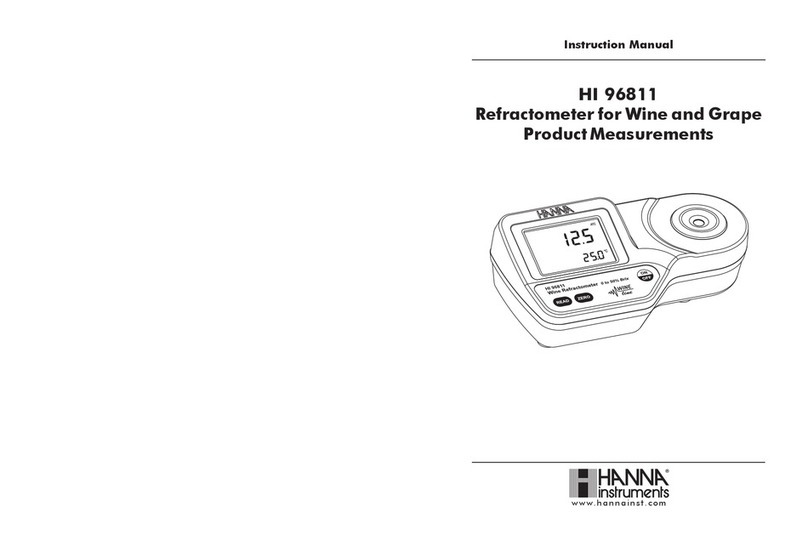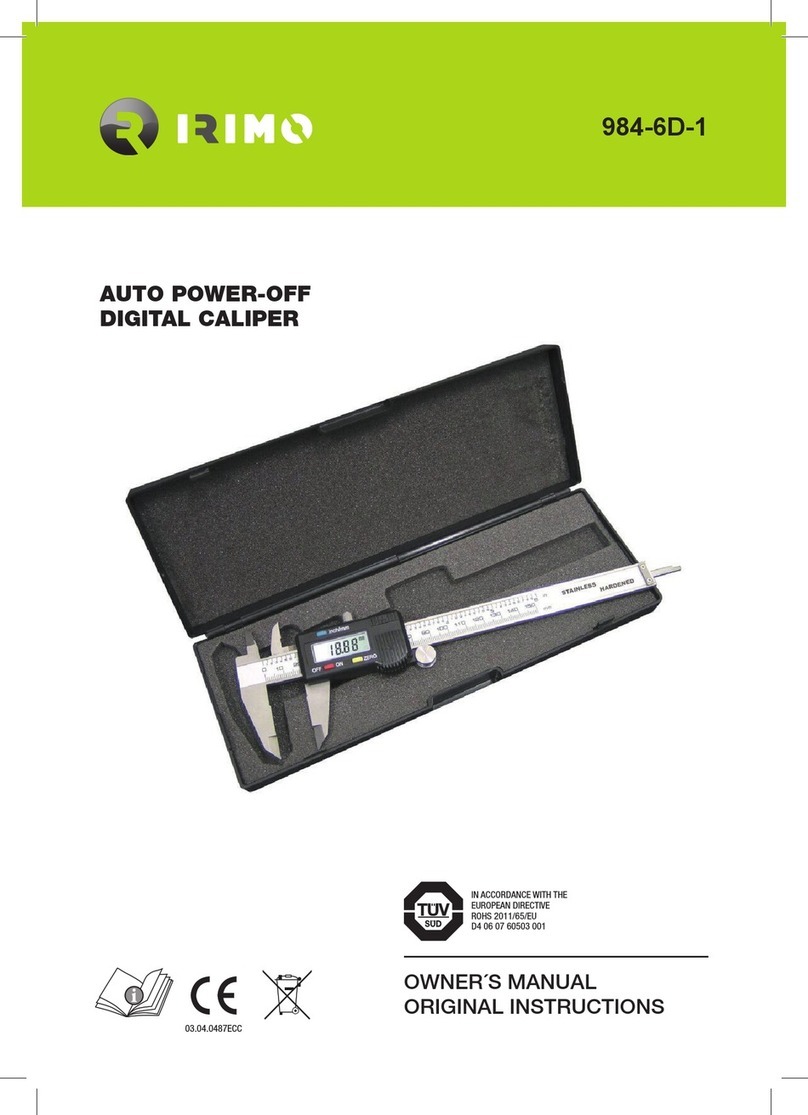Hanna Instruments HI 250 User manual
Other Hanna Instruments Measuring Instrument manuals

Hanna Instruments
Hanna Instruments Checker HI 753 User manual
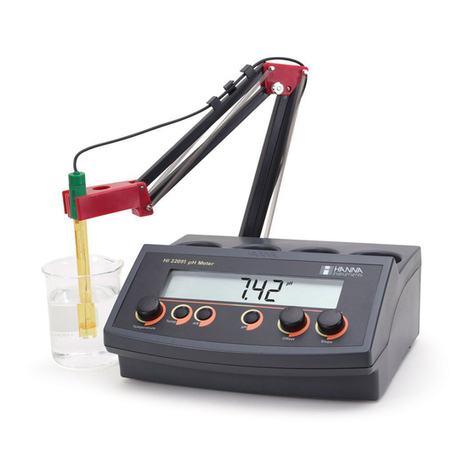
Hanna Instruments
Hanna Instruments HI 2209 User manual
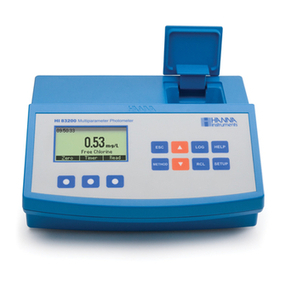
Hanna Instruments
Hanna Instruments HI 83200 User manual
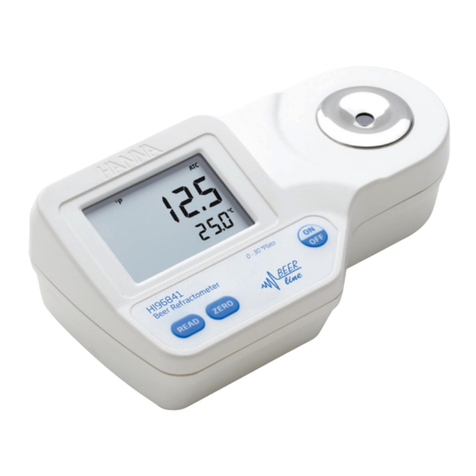
Hanna Instruments
Hanna Instruments HI96841 User manual
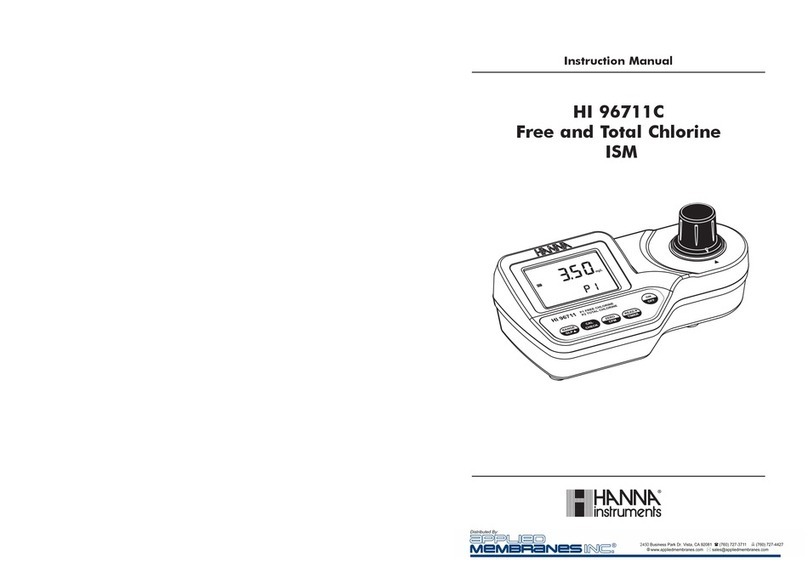
Hanna Instruments
Hanna Instruments 96711C User manual
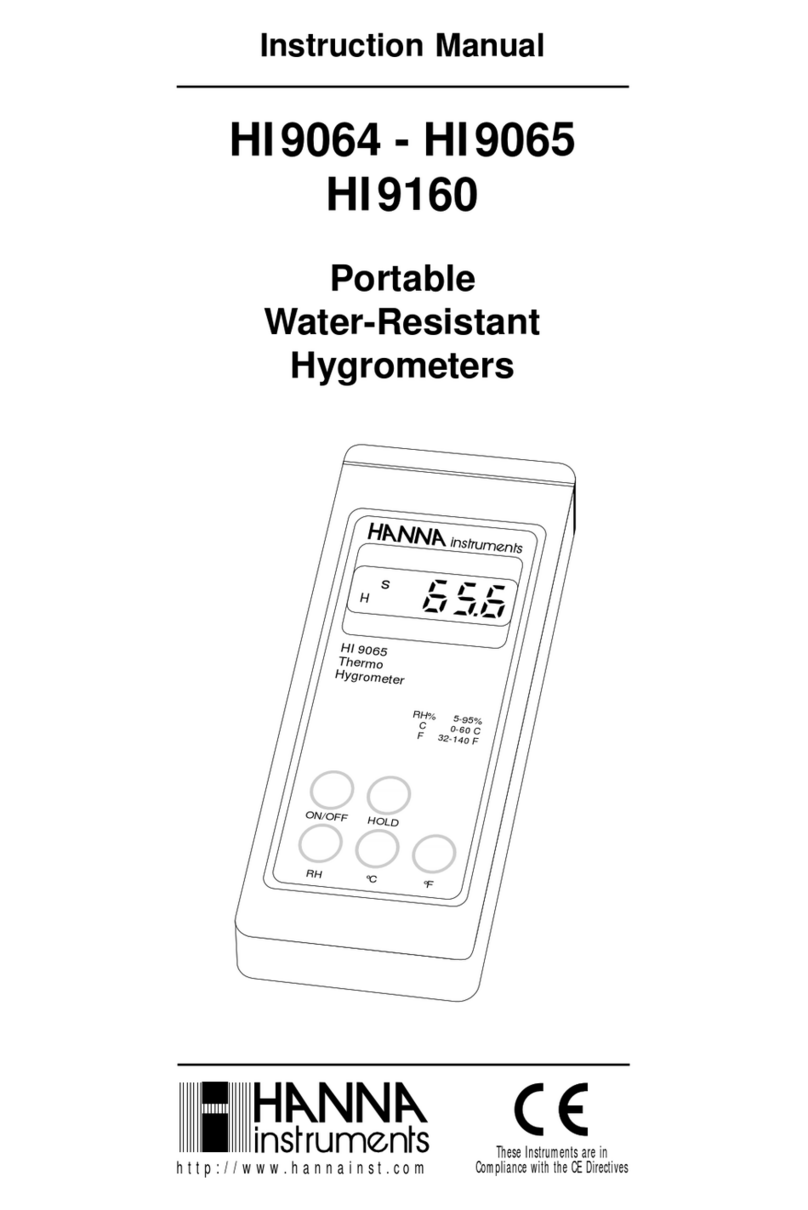
Hanna Instruments
Hanna Instruments HI9064 User manual
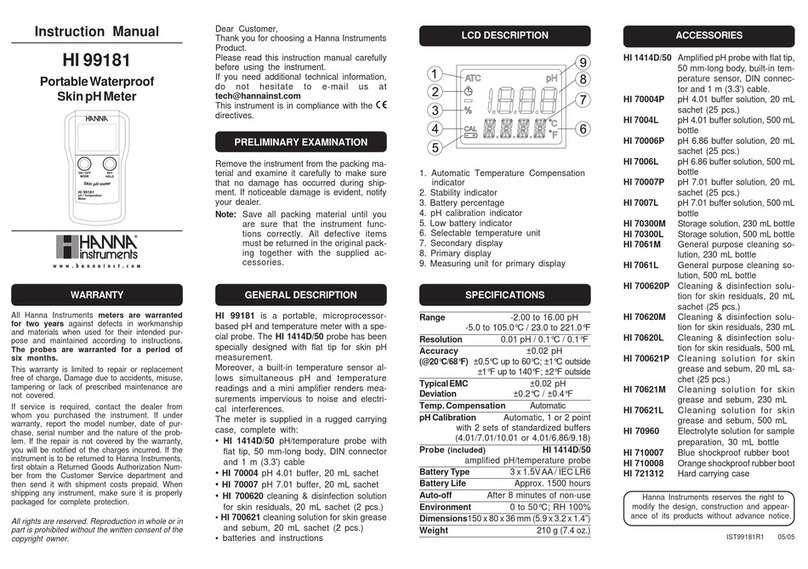
Hanna Instruments
Hanna Instruments HI 99181 User manual

Hanna Instruments
Hanna Instruments Pool Line HI95654 User manual
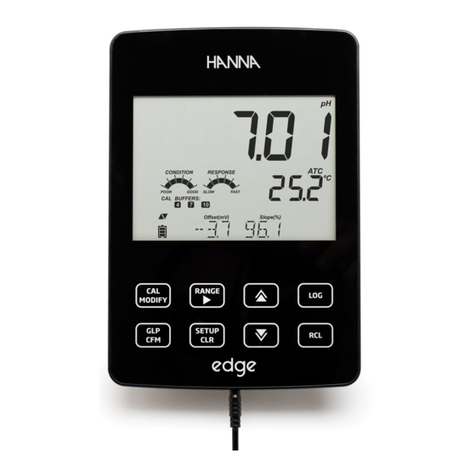
Hanna Instruments
Hanna Instruments Edge HI 2020 User manual
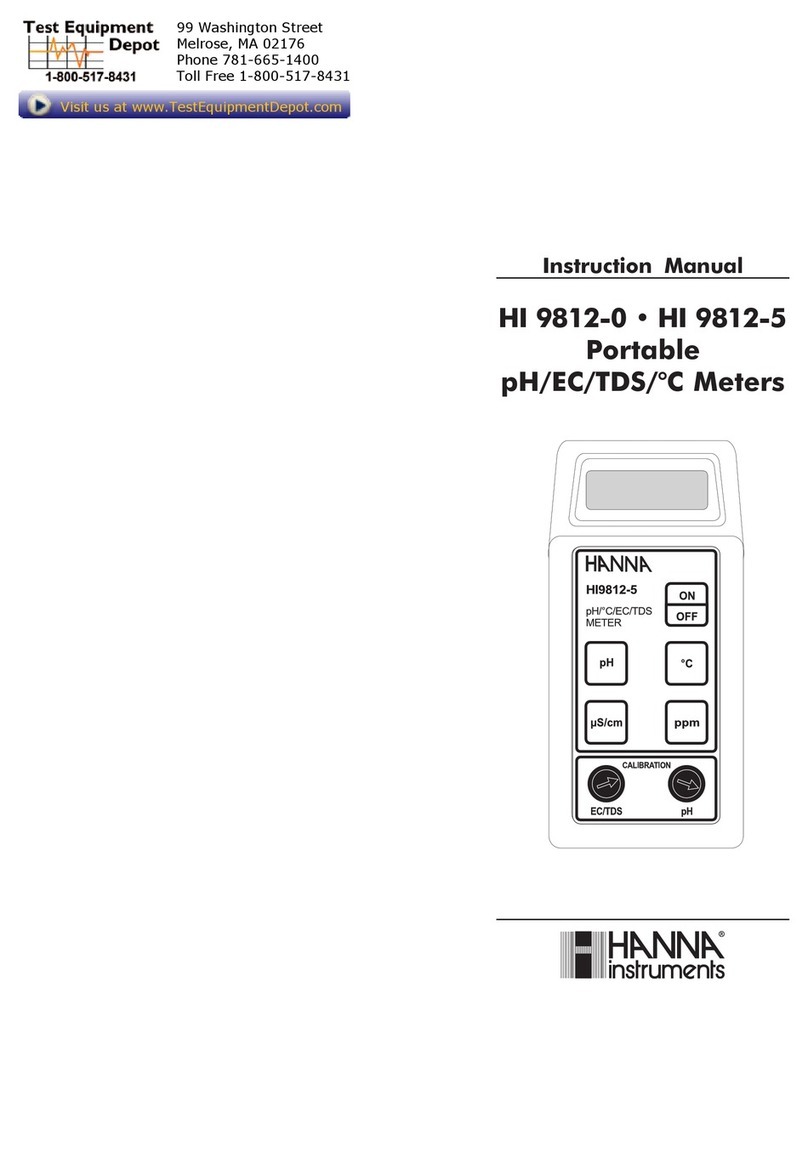
Hanna Instruments
Hanna Instruments HI 9812-0 User manual
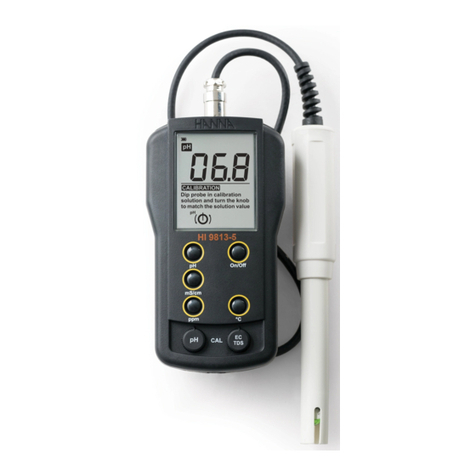
Hanna Instruments
Hanna Instruments HI 9813-6 User manual
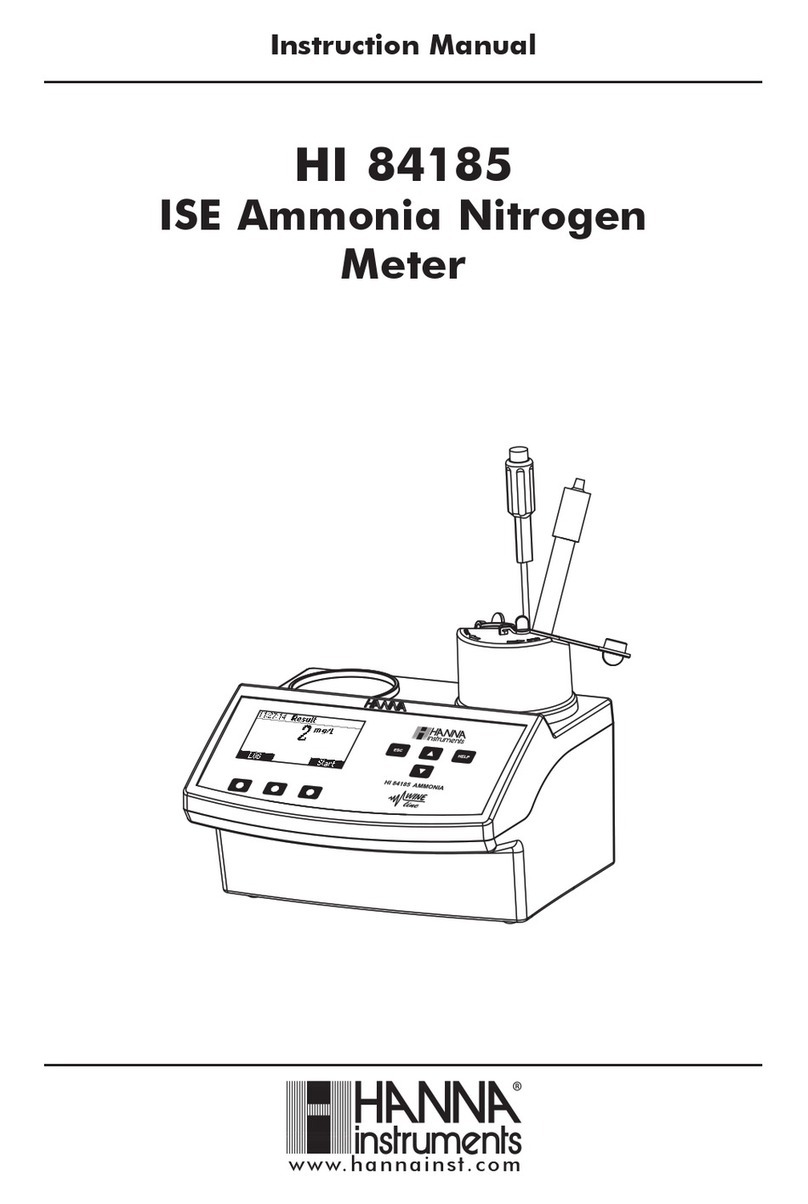
Hanna Instruments
Hanna Instruments HI 84185 User manual
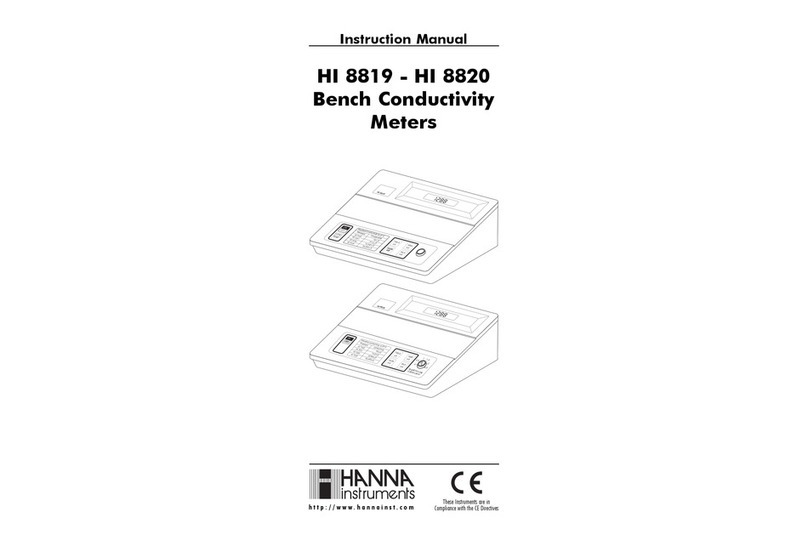
Hanna Instruments
Hanna Instruments HI 8819 User manual
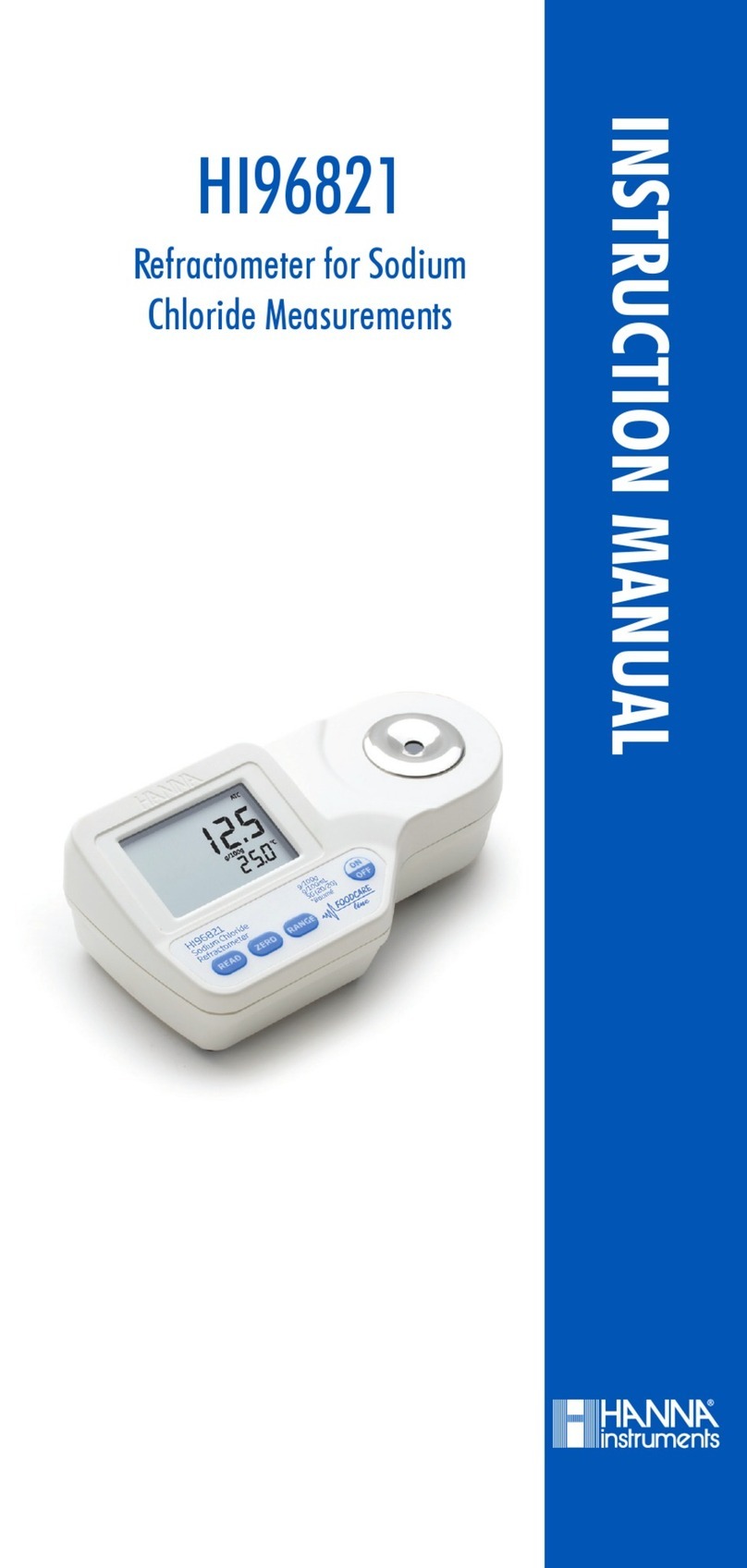
Hanna Instruments
Hanna Instruments HI 96821 User manual
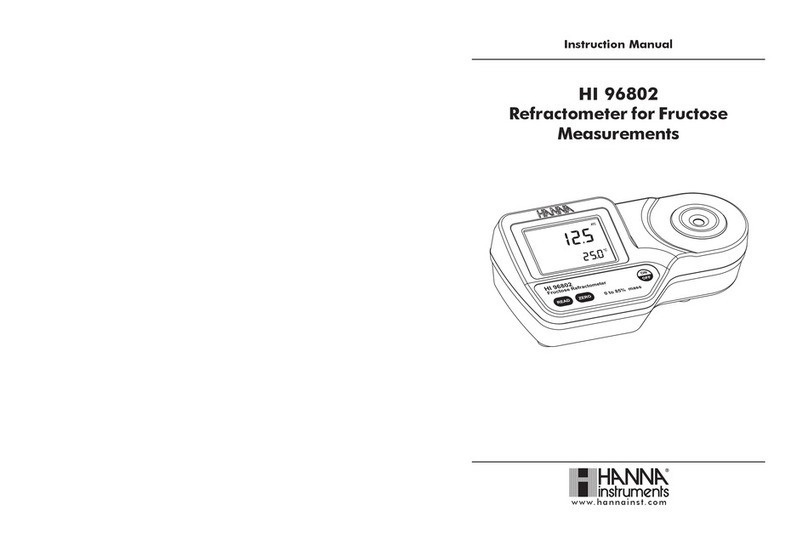
Hanna Instruments
Hanna Instruments HI96802 User manual
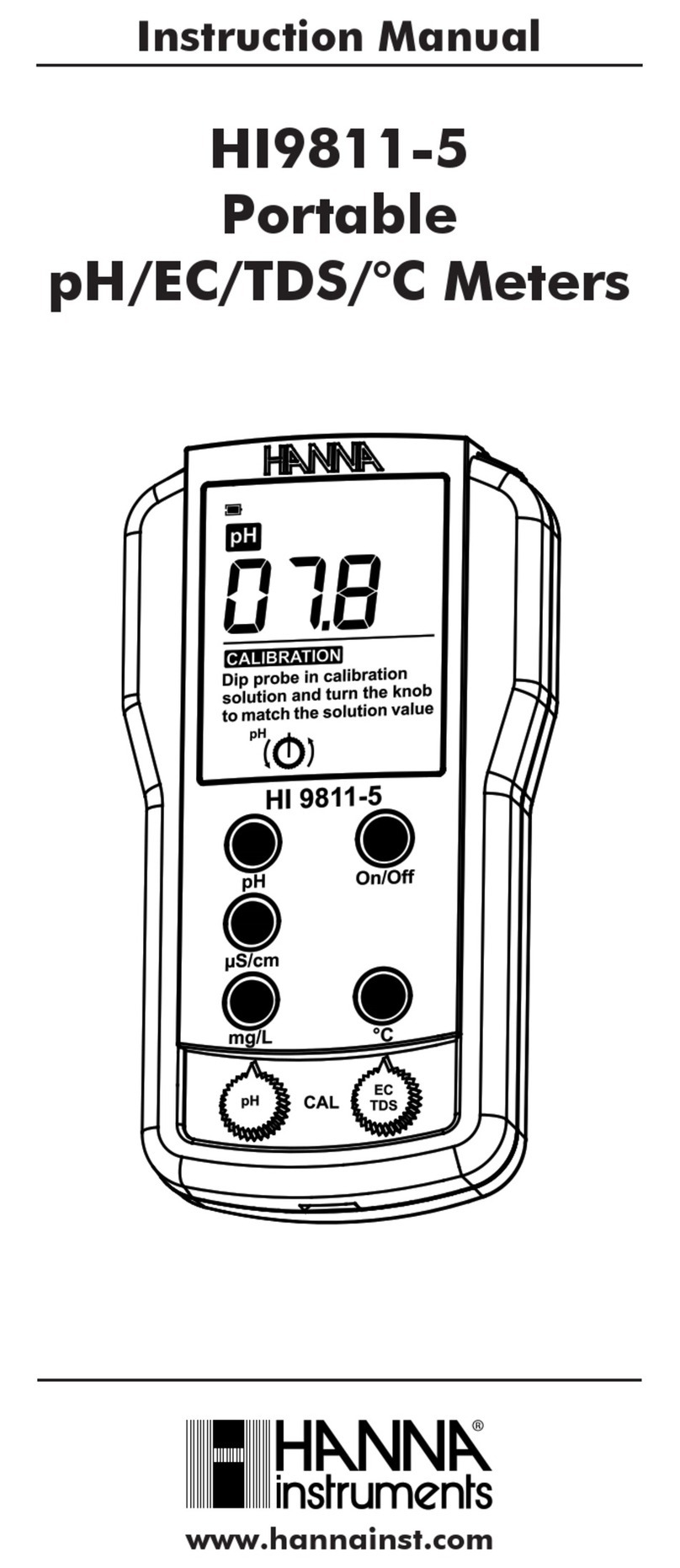
Hanna Instruments
Hanna Instruments HI 9811-5 User manual
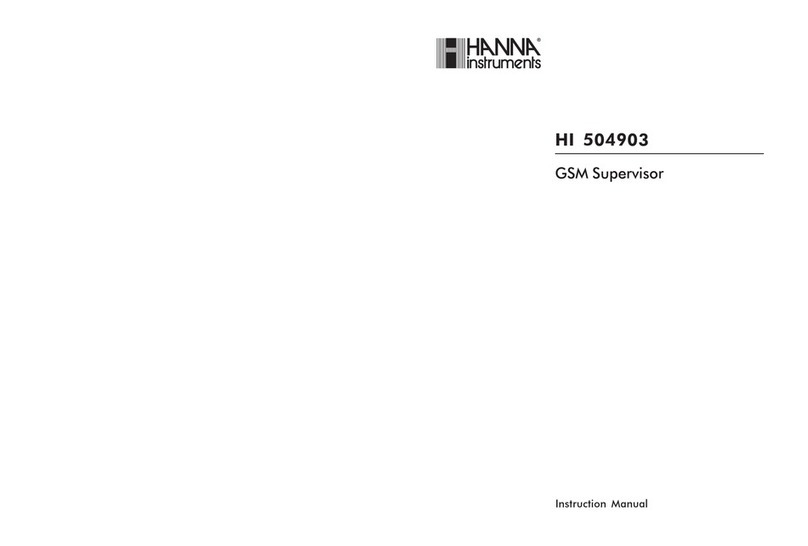
Hanna Instruments
Hanna Instruments HI 504903 User manual

Hanna Instruments
Hanna Instruments IC-HI98163 User manual
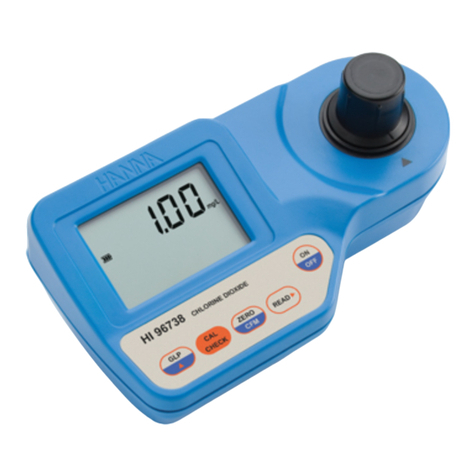
Hanna Instruments
Hanna Instruments HI 96738C User manual
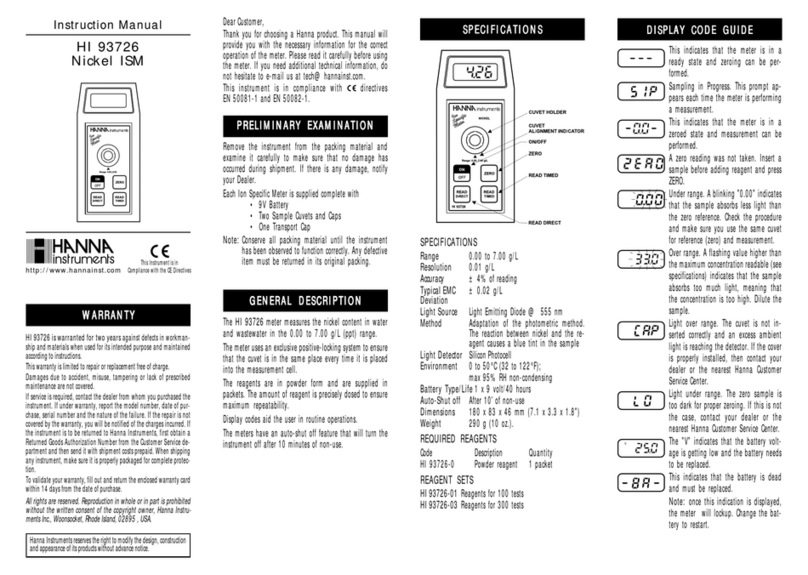
Hanna Instruments
Hanna Instruments HI 93726 User manual
Popular Measuring Instrument manuals by other brands

Powerfix Profi
Powerfix Profi 278296 Operation and safety notes

Test Equipment Depot
Test Equipment Depot GVT-427B user manual

Fieldpiece
Fieldpiece ACH Operator's manual

FLYSURFER
FLYSURFER VIRON3 user manual

GMW
GMW TG uni 1 operating manual

Downeaster
Downeaster Wind & Weather Medallion Series instruction manual

Nokeval
Nokeval KMR260 quick guide

HOKUYO AUTOMATIC
HOKUYO AUTOMATIC UBG-05LN instruction manual

Fluke
Fluke 96000 Series Operator's manual

Test Products International
Test Products International SP565 user manual

General Sleep
General Sleep Zmachine Insight+ DT-200 Service manual

Sensa Core
Sensa Core Lacto Spark user manual
